 Ablative Carbon Dioxide (CO2) Laser
Ablative Carbon Dioxide (CO2) LaserEvery Skincare And Makeup Product To Use After Cosmetic Procedures
A skincare switch-up is oh-so-very necessary.
After a skin treatment or facial procedure, your skin may be in a compromised state. As a result, it requires specific care and attention that is different from what you use daily. This is true of both skincare and makeup. Due to the vulnerability of the skin — plus redness, inflammation, scarring, and more — it's best to switch over to post-treatment-approved products for the initial healing process. Read on to better understand what your skin needs post-op and the best products to bolster your recovery process.
Take a Gentle Approach
After a cosmetic treatment, procedure, or facial plastic surgery, there is always a specialized skincare regimen (depending on the chosen procedure) that your provider will advise you to follow. Often, that protocol will focus on reinforcing the natural protective barrier of skin by using a nourishing moisturizer and a gentle cleanser, says Michele Green, MD, a board certified dermatologist in New York City. “This is particularly important because many cosmetic procedures involve inducing collagen production in the skin through targeted and controlled trauma,” she says. Whether the modality is a chemical peel or a skin-resurfacing laser, Dr. Green explains that it’s normal for the skin to become sensitive and more delicate after treatment.
For this reason alone, it's imperative to restore the skin barrier and ‘nurse’ it back to health. Encouraging restorative healing on just-treated skin will allow it to rebound quicker and for the results to be that much better. However, after a heavy-duty treatment or undergoing plastic surgery of any type is not the time to start experimenting with new products. Plus, there are plenty of ingredients that you'll want to steer clear of until your doctor gives you the green light (usually one week or so depending on the procedure and how the skin is healing) to resume using them. Those actives include:
- Retinol & Retinoids: For as much good as retinol and retinoids do, the one time you want to stay away from the vitamin A derivatives at all costs is after anything invasive. Some providers advocate for using retinol to help speed up the exfoliation process post-treatment, but this needs to be done carefully and under strict supervision.
- Anti-Acne Ingredients: Those who regularly use anti-acne ingredients like salicylic acid and benzoyl peroxide should not use them (or any other blemish fighters) until the skin fully heals because acids and other potent actives can further compromise and dry out the skin.
- Vitamin C: Some skin types are inherently sensitized by vitamin C, depending on the concentration and source, which is why many experts suggest laying off of it in the days following a procedure.
That same approach to mindful TLC goes for cleansing, too. Even after a treatment, you’ll still want to partake in regular cleansing to help lift away dead skin. Post-procedure cleansing should always consist of calming ingredients and be free of fragrance. Also, stay away from acids, anti-acne ingredients, and grainy exfoliators.
Build Back Up the Barrier
Perhaps the most essential element of ensuring the skin heals efficiently is to protect and restore the skin barrier (i.e. the delicate layer of defensive skin). “This will help best protect skin from bacteria and other environmental irritants that may interfere with the healing process,” Dr. Green explains.
Adhering to a relatively strict post-treatment protocol for more invasive treatments like ablative lasers, deep chemical peels, and even surgery is crucial for healthy healing, too. Dermatologists and plastic surgeons often recommend thick occlusive ointments to help restore the barrier and mitigate irritation and inflammation, which are known to cause hyperpigmentation and other reactions. Then, once your doctor sees improvement, it's usually time to switch to a more traditional moisturizer with hyaluronic acid and/or ceramides.
Depending on the treatment and the patient, there may be some slight modifications to this protocol. For example, Jason Emer, MD, a board certified dermatologist in Los Angeles, says that petrolatum-based ointments aren’t always great to use post-laser because they keep heat in the skin and retain redness. “So, now, instead, we’re using a lot of growth factors in my practice to repair the barrier along with hyaluronic acid and even vitamin C,” he shares.
Remember, the point of a non-ablative resurfacing treatment, like a light laser or microneedling, is to access deeper layers of skin to deliver supercharged active ingredients. “Flooding those channels with occlusives kind of defeats the purpose, which is another reason why I don’t like occlusives so much,” he explains.
As an alternative to thick occlusive agents, hyaluronic acid may be a good stand-in. Since it’s a humectant, it has the ability to draw moisture into the skin and restore hydration levels. “This is beneficial for skin health and helps aid in the healing process after having a cosmetic treatment," Dr. Green says. Another important component? It is non-comedogenic. “It won't clog or congest the pores as some moisturizers may do to oily skin types, which is why it works wonders for oily skin types — and all skin types — post-treatment," she adds.
Bland Is Best
After any cosmetic or facial surgery, there is often a significant amount of swelling and inflammation in and around the area, which, San Diego-based double board certified facial plastic and reconstructive surgeon Amir Karam, MD, says causes a lot of patients to complain of their skin being unusually dry. “Simple, bland moisturizers help moisturize the skin,” he says. After using an ointment in the first few days post-op, most patients will transition to a no-frills moisturizer packed with nourishing ingredients.
When in doubt, skincare products with calming agents are the way to go. And, as far as makeup goes, mineral-based formulas, which won’t clog pores, are best. Dr. Emer also likes ultra-gentle enzyme cleansers for post-laser and microneedled skin to “help break up the dead skin cells, scabs, crusting, and even the blood that remains. “These types of products break all of that apart enzymatically,” he adds, which means no manual exfoliation.
Sunscreen is the backbone of any good skincare routine, and it holds just as much weight — if not more — on just-treated skin. After any procedure, it's best to avoid direct sun exposure (post-laser skin, for example, can become damaged and irritated when exposed to the sun during healing) and slather up with a physical-blocking sunscreen. “Sunscreen should be immediately used — just not on the first day if you had something more aggressive done — and tinted versions are helpful to conceal any redness,” Dr. Emer suggests.
Spending time and money on something like a laser or deep peel to undo sun damage and then not protecting that investment with a good sunscreen that costs $40 or less is just silly, so always apply (and reapply throughout the day) sunscreen with an SPF of at least 30 or higher.
Color Safe
The procedure or treatment you just opted for pretty much dictates how soon you can swipe back on your favorite eyeshadow or concealer. Dr. Green usually instructs patients to stay away from makeup after a procedure since it can interfere with skin healing and lead to excessive irritation.
After chemical peels and lasers that break or resurface the skin, the epidermis should heal (this can take up to a few weeks) before applying most traditional makeup, Dr. Karam says. When it comes to procedures with specific incision sites, the rules are usually a little different. “With surgeries like eyelid surgery, facelifts, fat transfers, and such, there isn't a limitation to being able to use skincare products or makeup shortly afterward," he adds.
There is, however, one serious caveat: Never apply anything directly on an incision unless it's a specific type of makeup and your surgeon says it's okay. He recommends his patients wear mineral-based cosmetics instead of chemical-based formulas because they tend to be gentler and less sensitizing.
The Best Post-Procedure Skincare & Makeup
Now that you understand why it’s important to swap out your skincare and makeup routine post-procedure, it’s time to stock up on the essentials. Before heading in for your treatment, make sure to add some of these picks (after clearing it with your provider, of course) to your routine.
The OG Ointment: Aquaphor Healing Ointment
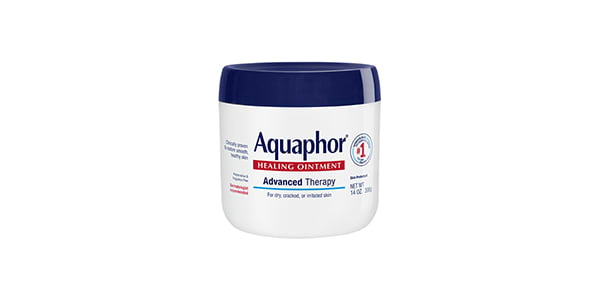
Cheap and accessible, dermatologists love this petrolatum-based ointment and often advise their patients to reapply it throughout the day to lock in moisture. For example, Dr. Green recommends patients use the non-irritating balm after ablative laser treatment as the skin heals. $14, walmart.com
For a Serious Dose of Hydration: Glytone Soothing Lipid Recovery Cream
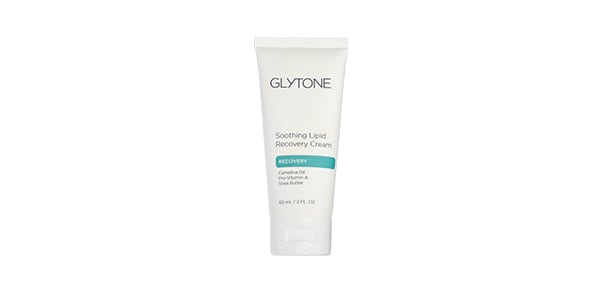
Perfect for keeping the skin on the face well-hydrated after moisture-zapping procedures like peels and lasers, this calming cream also works to restore the skin's delicate barrier and lipid levels so that skin feels and looks less dry, tight, rough, and itchy. $46, dermstore.com
Post-Surgery-Safe Makeup: Oxygentix Oxygenating Foundation
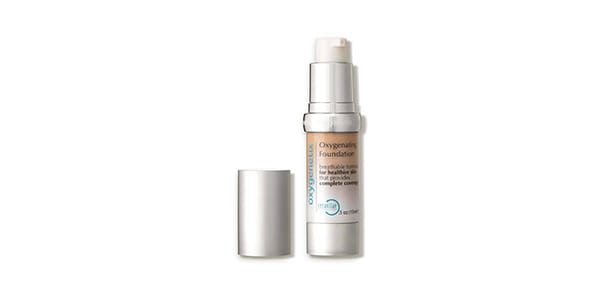
Available in 14 shades, this oxygen-based foundation is one of the only formulas that is okay to use over incisions and on the skin as long as the epidermis is healed. For an extra layer of precaution, always make sure to apply makeup to just-treated skin with clean, washed makeup brushes and applicators. $66, oxygenetix.com
For Oily & Acne-Prone Skin: Emerage Skin Hyla-B
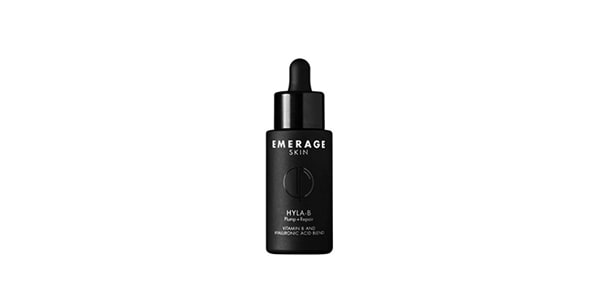
Oily and acne-prone skin types still need to use some form of a healing product, but it's best to stay away from highly occlusive, ultra-thick ointments since they can clog the pores. Enter this lightweight moisturizer from Dr. Emer’s skincare line. The serum boasts four different molecular weights of hyaluronic acid for increased elasticity and hydration. $98, emeragecosmetics.com
All Eyes on You: Colorescience Total Eye 3-In-1 Renewal Therapy SPF 35
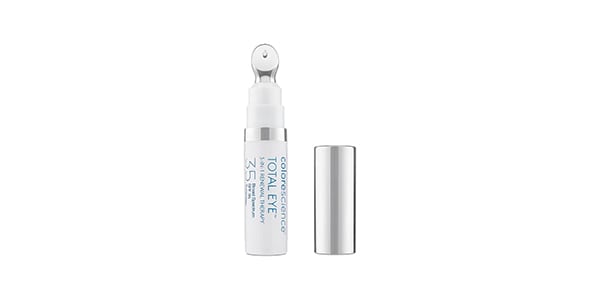
Once you’re in the clear to start wearing concealer around the eye area, this is the one you’ll want to reach for. This three-in-one magic potion instantly brightens darkness under the eyes while reducing puffiness and concealing (it comes in four shades). Plus, it contains a mineral (read: non-chemical) sunscreen — imperative after any eye-related procedure — that won’t sting, burn, or irritate the fragile skin. $74, colorescience.com
The Holistic Hydrator: Leaf People Arnica & Frankincense Soothing Cream
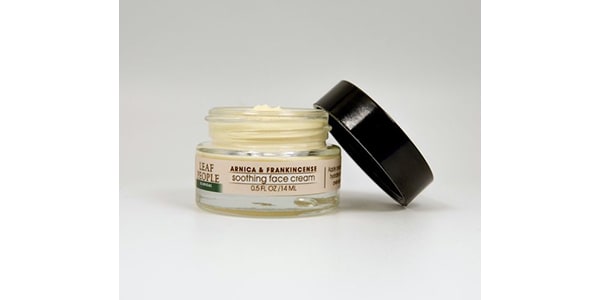
This clinical line was founded by a certified medical herbalist and features time-tested herbs that help the skin to heal healthily post-procedure. Arnica is a favorite of dermatologists and plastic surgeons since it works to take down swelling and bruising, and this light cream contains it along with plant-sourced hyaluronic acid to quench dry, thirsty skin. $35, leafpeople.com
Alleviate Post-Laser Stressed Skin: The A Method Soothe HC Arnica Recovery Balm
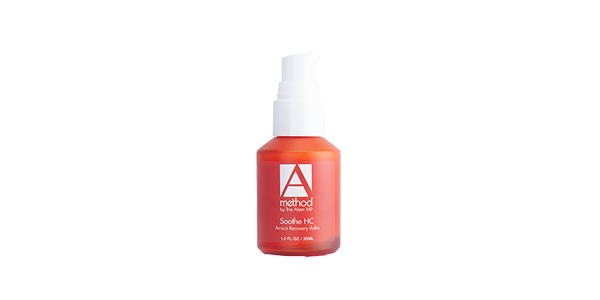
Tina Alster, MD, is a top dermatologist who, day in and day out, performs laser treatments and the like. Her anti-inflammatory, soothing serum for stressed and compromised skin counts one percent hydrocortisone and 12 percent arnica Montana as the star ingredients, alongside hyaluronic acid to prevent water loss, limit irritation, minimize bruising, and restore the skin’s barrier. $140, theamethod.com
The Multi-Purpose Must-Have: Jane Iredale Glow Time Full Coverage Mineral BB Cream SPF 25
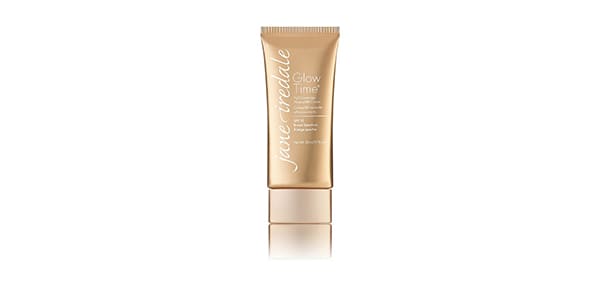
One of our favorite go-tos for concealing just about everything is this water-resistant BB cream, which gives flawless coverage while still allowing the skin to breathe as it heals. The mineral-based formula comes in 10 shades, is dermatologist and allergy tested, and features an SPF of 25. $50, ulta.com
For a Speedier Recovery: Alastin INhance Post-Injection Serum
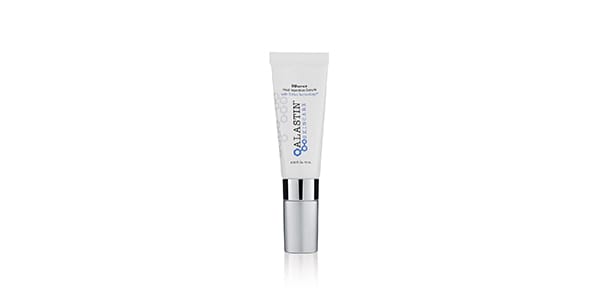
Bruising and swelling are common with injectables, fillers, and microneedling, but applying this post-treatment serum to treated areas helps speed up recovery and make it as seamless as possible. The cooling tip calms and soothes the skin — and feels-oh-so-good — while also increasing hydration for a mild plumping effect. $55, alastin.com
The Non-Irritating SPF: Isdin Sunscreen Eryfotona Ageless
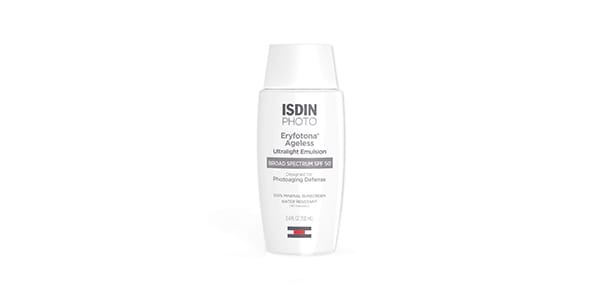
Sunscreen is non-negotiable, and the same principle applies to post-procedure skin. The key, however, is to use physical blockers with mineral ingredients plus skin soothers — and that's just what this formula packs into every squeeze. Plus, it's lightly tinted, so it helps conceal any redness and bruising that may be evident without the need for additional makeup. $70, isdin.com
A Dermatologist-Approved Cleanser: MGSkinLabs Gentle Cleanser
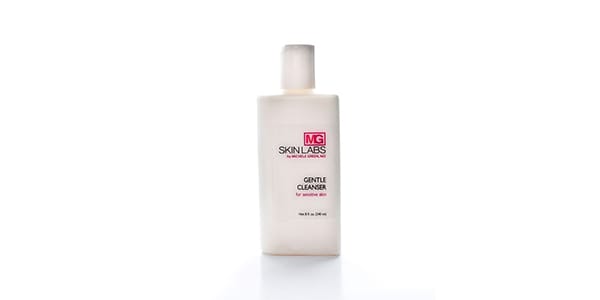
Formulated by Dr. Green, so you know it has the dermatologist stamp of approval, this mild cleanser is gentle enough to use on lasered skin yet effective enough to whisk away dirt, oil, and makeup without stripping the skin of its natural oils and moisture. $30, michelegreenmd.com
For Barrier Repair: SkinMedica TNS Ceramide Treatment Cream
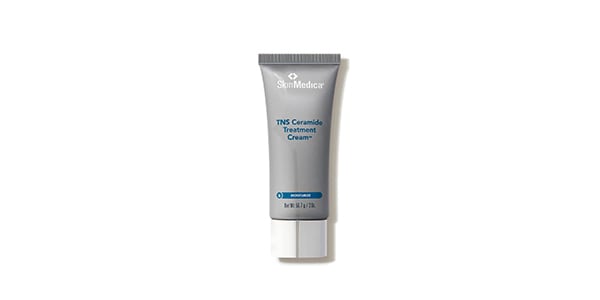
Ideal for dry and post-procedure skin, this peptide-packed product promotes collagen production and new cell growth. Ceramides condition severely dry, damaged, and/or compromised complexions by boosting barrier function and maintaining the moisture mantle of the skin. $69, dermstore.com
The Plant-Based Alternative: Doctor Rogers Restore Healing Balm
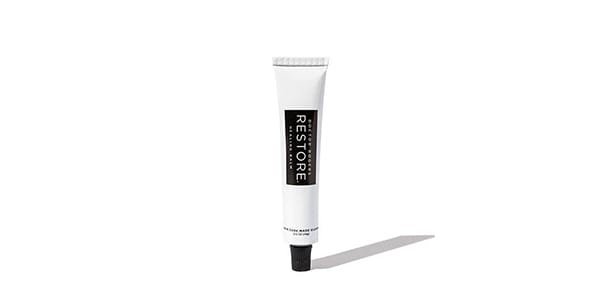
A 100 percent plant-based take on Aquaphor, this all-purpose ointment features glycerin to promote healing and restore the skin barrier and castor seed oil to increase moisture and decrease inflammation. Use it post-procedure or to target eczema symptoms, dryness, burns, scrapes, tattoo healing, and more. $30, dermstore.com
All products featured are independently selected by our editors, however, AEDIT may receive a commission on items purchased through our links.
More Related Articles
Related Procedures

AI Plastic Surgeon™
powered by'Try on' aesthetic procedures and instantly visualize possible results with The AI Plastic Surgeon, our patented 3D aesthetic simulator.


